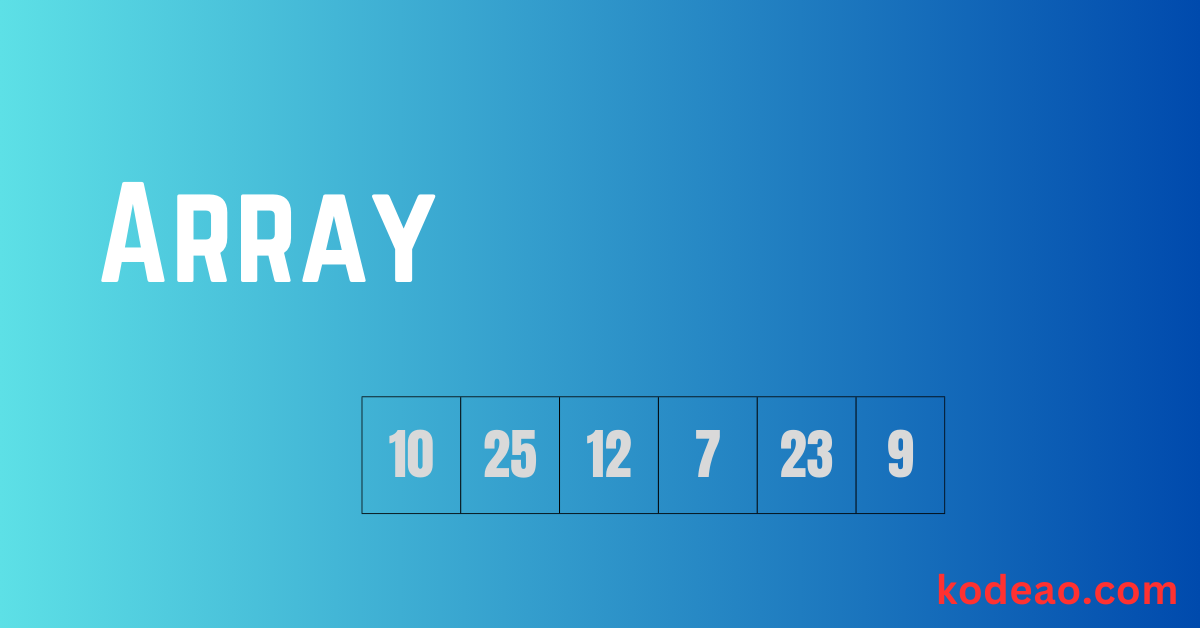In the world of programming, arrays are fundamental data structures that every developer encounters. Arrays play a crucial role in storing and organizing data efficiently, allowing easy access and manipulation. Whether you’re a beginner or an experienced developer, mastering arrays is essential to building efficient and scalable applications. In this article, we’ll dive deep into what arrays are, their types, how they work in different programming languages, and common operations associated with them.
What is an Array?
An array is a collection of elements, all of the same data type, stored at contiguous memory locations. The elements in an array are indexed, meaning each element can be accessed by its position in the array, typically starting from index 0.
Arrays allow programmers to:
- Store multiple values under a single variable name.
- Access elements quickly using their index.
- Perform bulk operations efficiently, such as sorting and searching.
Types of Arrays
Arrays can be categorized in multiple ways based on their structure and usage. Some of the most common types include:
1.One-dimensional Arrays:
These are simple arrays where elements are stored in a linear sequence. You can access an element by specifying its index.
int[] numbers = {10, 20, 30, 40};
System.out.println(numbers[1]); // Outputs: 202.Multi-dimensional Arrays:
Java supports multi-dimensional arrays, the most common being two-dimensional arrays. These can be thought of as arrays of arrays, and are often used to represent matrices.
// Declare a 2D array
int[][] matrix = {
{1, 2, 3},
{4, 5, 6},
{7, 8, 9}
};
System.out.println(matrix[1][2]); // Outputs: 63.Dynamic Arrays:
In Java, the ArrayList class provides a dynamic array, which can resize itself as needed when elements are added or removed.
import java.util.ArrayList;
ArrayList<Integer> dynamicArray = new ArrayList<>();
dynamicArray.add(10);
dynamicArray.add(20);
dynamicArray.add(30);
System.out.println(dynamicArray.get(2)); // Outputs: 30Common Array Operations
Arrays are versatile because they allow a wide range of operations. Below are some of the most commonly used operations across programming languages:
1.Accessing Elements:
Accessing elements in an array is fast, thanks to their indexed structure. For instance, accessing the element at index i typically takes constant time, O(1).
2.Inserting Elements:
Depending on the programming language, inserting an element can either be efficient or slow. For example, appending to the end of a dynamic array is O(1), while inserting at the beginning can be O(n) as elements need to shift.
3.Deleting Elements:
Deleting an element, similar to insertion, may require shifting elements. If deletion occurs from the middle or start of the array, the time complexity can be O(n).
4.Searching Elements:
Linear search (O(n)) and binary search (O(log n)) are common ways to search for elements in arrays. Binary search requires the array to be sorted.
5.Sorting Arrays:
Arrays can be sorted using various algorithms such as bubble sort, quicksort, or merge sort. Most programming languages come with built-in sorting functions.
Arrays in Popular Programming Languages
- Python: In Python, arrays are usually implemented using lists. Lists are dynamic, allowing elements of different types and sizes to be added or removed.
- Java: Java supports both static and dynamic arrays. Static arrays are fixed in size, while dynamic arrays can resize during runtime using classes like
ArrayList. - C++: In C++, arrays are fixed in size, but developers can use the
std::vectorclass for dynamic arrays, which automatically resize as needed. - JavaScript: Arrays in JavaScript are dynamic and can store elements of different types. They come with a variety of built-in methods, such as
.push(),.pop(), and.splice().
When to Use Arrays
Arrays are ideal when:
- You need to store a collection of data that can be easily accessed via an index.
- You want constant-time access to elements.
- The size of your data set is known in advance (for static arrays).
However, arrays may not be the best choice if:
- The size of the data set changes frequently (use dynamic arrays or other data structures like linked lists).
- You need to perform frequent insertions or deletions at the start or middle of the collection.
Conclusion
Arrays are foundational to programming, providing an efficient way to store and manage collections of data. Whether you’re dealing with simple lists or multi-dimensional structures, understanding arrays and their operations is key to writing optimized code. As you grow as a developer, mastering arrays will open doors to more complex data structures like linked lists, stacks, and queues.
Key Takeaways:
- Arrays store elements of the same type in contiguous memory.
- Common operations include accessing, inserting, deleting, searching, and sorting.
- Popular languages handle arrays differently, with static and dynamic arrays being the two main types.
Mastering arrays is crucial for every programmer, as they form the basis of more complex data structures and algorithms.
FAQs:
1. What is the difference between an array and a list?
- Arrays are typically fixed in size and store elements of the same data type, while lists in languages like Python can store elements of varying types and are dynamic in size.
2. How do arrays improve performance in programs?
- Arrays allow constant-time access to elements and provide an efficient way to handle large data sets without requiring complex data structures.
3. Can arrays store different data types?
- In some languages, like Python and JavaScript, arrays (or lists) can store different types. However, in languages like C++ and Java, arrays must store elements of the same type.

